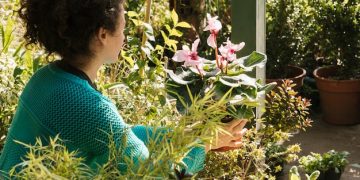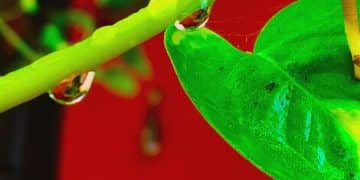Sustainable Gardening in the US: Best Practices for Eco-Friendly Growth
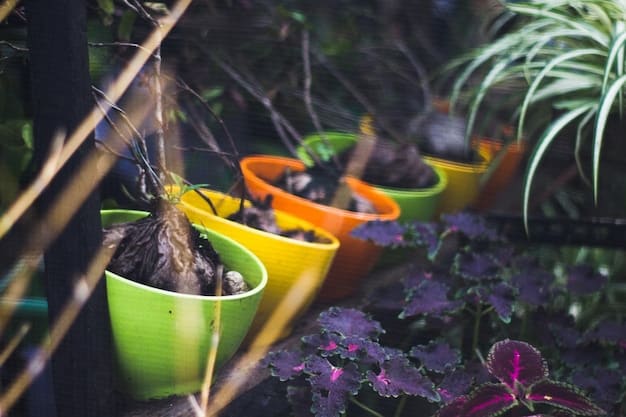
Sustainable gardening in the US integrates ecological principles like water conservation, soil health, and biodiversity to create resilient, productive, and environmentally friendly landscapes, benefiting both nature and gardeners.
In a world increasingly aware of its environmental footprint, the practice of gardening is evolving. For those in the United States seeking to cultivate a thriving outdoor space while simultaneously protecting our planet, understanding what are the best practices for sustainable gardening in the US? becomes a pivotal question. This detailed guide explores innovative, eco-conscious methods that transform traditional horticulture into a powerful tool for environmental stewardship and personal well-being.
Understanding the Core Principles of Sustainable Gardening
Sustainable gardening extends beyond simply growing plants; it’s a holistic approach that strives to create ecological balance within your garden space. It means working with nature, not against it, minimizing environmental impact while maximizing the health and productivity of your plants. This involves a thoughtful consideration of resources, from water and soil to energy and plant choices.
The foundation of sustainable gardening rests upon several key pillars: soil health, water conservation, biodiversity, and responsible resource management. Adopting these principles transforms a garden into a miniature ecosystem, fostering resilience and reducing the need for external inputs.
Building Healthy Soil from the Ground Up
Healthy soil is the bedrock of any successful garden, especially one focused on sustainability. Instead of relying on synthetic fertilizers, sustainable practices emphasize enriching the soil naturally, creating a living medium that supports robust plant growth and sequesters carbon.
- Composting: Turning kitchen scraps and yard waste into nutrient-rich compost improves soil structure, aeration, and water retention.
- Cover Cropping: Planting cover crops like clover or vetch during off-seasons protects soil from erosion, suppresses weeds, and adds organic matter when tilled back into the earth.
- Avoiding Tillage: No-dig or no-till methods help preserve soil structure, beneficial microorganisms, and earthworm populations, fostering a healthier underground ecosystem.
By focusing on soil care, gardeners can significantly reduce their reliance on chemical amendments, leading to more self-sufficient and vibrant gardens. The long-term benefits include enhanced plant immunity and a reduced susceptibility to pests and diseases.
The commitment to soil health demonstrates a deeper understanding of ecological processes, setting the stage for all other sustainable practices. It’s an investment in the future productivity and resilience of your garden.
Water Conservation: Smart Strategies for Modern Gardens
Water is a precious resource, and sustainable gardening in the US places a strong emphasis on इसका efficient use. With increasingly unpredictable weather patterns and water scarcity in many regions, adopting water-saving techniques is not just an option, but a necessity for responsible gardeners.
Effective water management involves understanding your garden’s specific needs and implementing strategies that minimize waste, ensuring that every drop counts towards hydrating your plants, not simply evaporating or running off.
Choosing Drought-Tolerant Native Plants
One of the most impactful ways to conserve water is by selecting plants that are naturally adapted to your local climate. Native plants require less supplemental irrigation once established, as they are accustomed to the ambient rainfall and soil conditions.
- Xeriscaping: Designing gardens that require little to no irrigation, often incorporating drought-tolerant plants, gravel, and efficient watering systems.
- Regional Plant Selection: Researching and planting species native to your specific US region, such as cacti and succulents in arid zones or wetland plants in damper areas.
- Reducing Lawn Size: Replacing water-intensive lawns with native groundcovers, shrubs, or permeable hardscaping can drastically cut water usage.
Beyond native flora, incorporating well-adapted drought-tolerant ornamentals can also contribute significantly to water savings without sacrificing aesthetic appeal. These plants often have unique adaptations, such as waxy leaves or deep root systems, that help them survive with less water.
The sheer variety of native and drought-tolerant options available across the US means there is a plant for almost every landscape and aesthetic preference. This approach not only saves water but also supports local ecosystems by providing habitat and food sources for native wildlife.
Implementing Efficient Irrigation Systems
Even with water-wise plant choices, supplemental watering may still be necessary at times, particularly during dry spells or for newly established plants. How you deliver that water can make a significant difference in conservation efforts.
Drip irrigation systems and soaker hoses deliver water directly to the plant roots, minimizing evaporation and runoff commonly associated with overhead sprinklers. Smart irrigation controllers, which adjust watering schedules based on local weather forecasts and soil moisture levels, further enhance efficiency.
Rainwater harvesting, through the use of rain barrels or larger cisterns, is another excellent strategy. Collected rainwater can be used to irrigate plants, reducing reliance on municipal water supplies and lowering your water bill. This practice also benefits the environment by reducing stormwater runoff, which can carry pollutants into local waterways.
By combining mindful plant selection with intelligent irrigation technologies, gardeners in the US can dramatically reduce their water footprint, ensuring their gardens thrive responsibly even in challenging conditions.
Enhancing Biodiversity and Attracting Pollinators
A truly sustainable garden is a miniature ecosystem, bustling with life above and below the soil. Encouraging biodiversity is crucial for garden health, helping to create a balanced environment where natural predators keep pests in check and pollinators ensure bountiful harvests.
This means moving beyond monoculture and embracing a rich tapestry of plants that support a wide array of insects, birds, and other beneficial creatures. It’s about designing a garden that is not just beautiful to us, but also a welcoming habitat for others.
Planting for Pollinators and Beneficial Insects
Pollinators, such as bees, butterflies, and hummingbirds, are vital for the reproduction of many plants, including most food crops. Attracting them to your garden is a cornerstone of sustainable practice, ensuring fruit set and overall plant health.
- Diverse Flowering Plants: Provide a continuous succession of blooms throughout the growing season, offering nectar and pollen sources for various pollinators.
- Host Plants: Include plants that serve as food for the larval stages of butterflies and moths, such as milkweed for monarch caterpillars.
- Shelter and Water: Offer shallow water sources and sheltered areas, like dense perennial beds or brush piles, for beneficial insects and small wildlife.
Beyond pollinators, many other insects are beneficial to the garden. Ladybugs prey on aphids, lacewings control mites, and predatory wasps can help manage caterpillar populations. By avoiding broad-spectrum pesticides, you allow these natural pest controllers to flourish, reducing the need for chemical intervention.
Gardeners can create an inviting habitat by integrating a mix of flowering plants, herbs, and vegetables. This diversity not only supports wildlife but also makes the garden more resilient to pest outbreaks and environmental stress. A balanced ecosystem is a self-regulating one, requiring less intervention from the gardener.
Creating Wildlife Habitats
Extending beyond insects, cultivating a sustainable garden involves providing for a variety of local wildlife. Integrating features that cater to birds, small mammals, and amphibians can significantly enhance the ecological value of your space.
Installing birdhouses, birdbaths, or even creating a small pond can attract a diversity of species. Dense shrubs and trees offer nesting sites and protective cover. By cultivating a layered landscape — with groundcover, shrubs, understory trees, and large canopy trees — you create multiple niches for different creatures.
Another important aspect is embracing some “messiness.” A small pile of logs, a patch of wildflowers, or leaving some fallen leaves can provide crucial habitat for overwintering insects and other small organisms. This seemingly unkempt approach is actually a highly effective strategy for ecological support.
Ultimately, a garden teeming with diverse life is a strong indicator of its sustainability. It signifies a thriving, interconnected ecosystem that contributes positively to the broader environment.
Responsible Resource Management and Waste Reduction
Sustainable gardening also champions the responsible use of resources and the minimization of waste. This approach encourages gardeners to think creatively about how they source materials and manage the byproducts of their horticultural activities, moving towards a circular economy within their own backyard.
By reducing, reusing, and recycling garden-related items, gardeners can significantly lower their environmental impact, conserving natural resources and diverting waste from landfills.
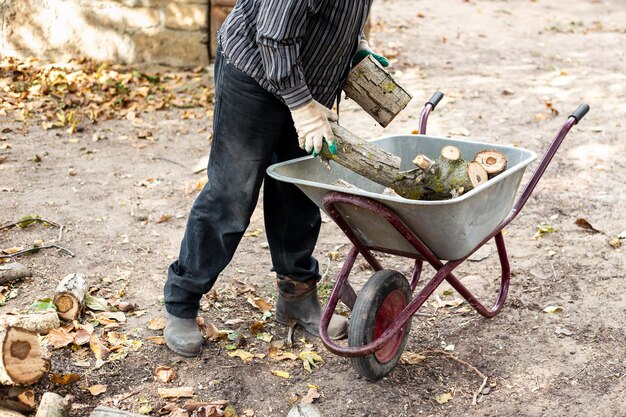
Reducing Waste through Composting and Mulching
Garden waste, such as grass clippings, fallen leaves, and spent plant material, can often be repurposed rather than discarded. Composting these organic materials transforms them into valuable soil amendments, closing the loop and returning nutrients to the earth.
Mulching is another excellent practice that conserves resources. Applying a layer of organic mulch, such as wood chips, shredded leaves, or straw, around plants helps retain soil moisture, suppresses weeds, and moderates soil temperature. As mulch breaks down, it also contributes organic matter to the soil, further enhancing its health.
By actively composting and mulching, gardeners reduce the need for plastic bags for yard waste, decrease their reliance on external soil conditioners, and create a more self-sustaining garden system. These simple acts embody the essence of responsible resource management.
Reusing Materials and Reducing Purchases
Before purchasing new items for the garden, consider what can be repurposed. Old containers can become planters, broken concrete pieces can form stepping stones, and even driftwood can be integrated into landscape design.
- Salvaged Materials: Utilize reclaimed wood for raised beds, old tires for potato planters, or broken pottery for drainage in pots.
- Seed Saving: Collect seeds from your own open-pollinated plants to reduce the need to buy new packets each year and preserve genetic diversity.
- Tool Maintenance: Properly cleaning and maintaining gardening tools extends their lifespan, reducing the frequency of replacement purchases.
This mindset not only saves money but also minimizes the consumption of new resources and the energy associated with manufacturing and transporting new products. It encourages creativity and a deeper connection with the materials you use in your garden.
Embracing a “reduce, reuse, recycle” philosophy in the garden fosters a more conscious and economical approach to gardening, aligning perfectly with sustainable principles.
Integrated Pest Management (IPM) for Healthier Gardens
Sustainable gardening steers clear of indiscriminate pesticide use, which can harm beneficial insects, contaminate soil and water, and pose risks to human health. Instead, it promotes Integrated Pest Management (IPM), a thoughtful, multi-faceted approach to pest control.
IPM focuses on prevention and monitoring, reserving targeted interventions as a last resort. This method aims to manage pest populations at acceptable levels rather than complete eradication, recognizing that some level of pest activity is natural in healthy ecosystems.
Monitoring and Early Intervention
The first step in IPM is regular observation of your garden. By frequently inspecting plants, you can detect pest infestations early, when they are easier to manage naturally.
- Regular Scouting: Check the undersides of leaves, new growth, and flower buds for signs of pests or disease.
- Identifying Pests: Learn to recognize common garden pests and beneficial insects. Correct identification is key to choosing the right management strategy.
- Cultural Controls: Ensure plants are healthy and well-suited to their environment. Stressed plants are more susceptible to pests. Good watering, proper feeding, and adequate sunlight contribute to plant vigor.
Early detection allows for less invasive solutions. For example, hand-picking a few caterpillars is far more sustainable than spraying an entire plant with an insecticide once a major infestation takes hold. This proactive approach minimizes harm to the environment and non-target organisms.
By understanding the life cycles and behaviors of garden pests, gardeners can often disrupt their activities before they become problematic. Rotating crops, for instance, can prevent soil-borne pests from establishing large populations in one area.
Biological and Physical Controls
When pest problems arise, IPM first looks to biological and physical controls. Biological controls involve introducing or encouraging natural predators and parasites to keep pest populations in check.
Physical controls include barriers, traps, and hand removal. Row covers can protect young plants from flying insects, sticky traps can monitor and catch certain pests, and targeted pruning can remove affected plant parts. These methods are precise and have minimal impact on the broader garden ecosystem.
Only when these methods are insufficient, and an infestation threatens significant harm, does IPM consider the use of pesticides, prioritizing organic or least-toxic options. Even then, application is highly targeted to minimize collateral damage.
This tiered approach to pest management ensures that chemicals are used judiciously and only when absolutely necessary, preserving the delicate balance of the garden ecosystem and promoting long-term health and productivity.
Choosing the Right Plants and Seeds for Your Region
The success of sustainable gardening in the US is largely tied to making informed choices about plant material. Selecting plants and seeds that are well-suited to your local climate and conditions is fundamental to reducing resource input and fostering robust growth.
This includes not just native plants, as mentioned earlier, but also understanding the nuances of seed sourcing, variety selection, and adapting practices to specific regional challenges.
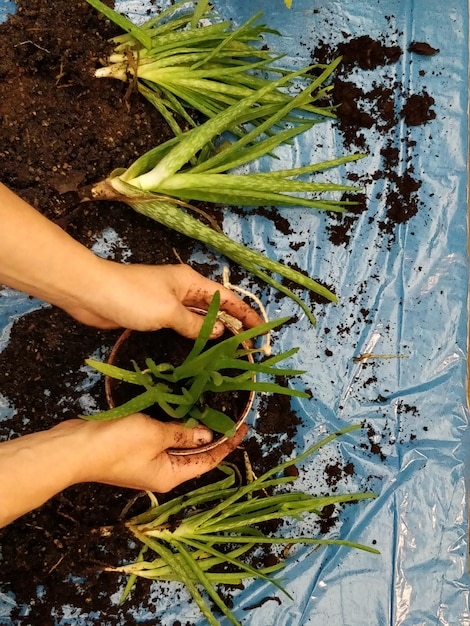
Prioritizing Native and Locally Adapted Varieties
Native plants are intrinsically adapted to the local soil, climate, and rainfall patterns, making them excellent choices for low-maintenance, water-efficient, and pest-resistant gardens. They also play a crucial role in supporting local wildlife, from pollinators to birds.
- Ecological Fit: Native plants have evolved alongside local flora and fauna, forming symbiotic relationships that contribute to ecosystem health.
- Reduced Inputs: They typically require less water, fertilizer, and pest control once established, as they are naturally resilient to local conditions.
- Biodiversity Support: Providing habitat and food for native insects and animals, helping to maintain ecological balance.
Beyond true natives, locally adapted varieties – plants that have been grown successfully in your region for generations – also offer significant advantages. These could be heirloom vegetables or fruit trees that perform particularly well in your specific microclimate.
By opting for these types of plants, gardeners not only reduce their workload but also contribute to the conservation of local ecosystems and agricultural heritage. It’s a powerful move towards regional self-sufficiency.
Sourcing Organic and Non-GMO Seeds
The choice of seeds also impacts garden sustainability. Opting for organic and non-GMO (genetically modified organism) seeds supports agricultural practices that are environmentally friendly and protects biodiversity.
Organic seeds are produced without synthetic pesticides or fertilizers, ensuring that your garden starts off on a clean slate. Non-GMO seeds guarantee that you are growing traditional varieties, preserving genetic diversity and avoiding the potential environmental concerns associated with genetically engineered crops.
Heirloom seeds, which are open-pollinated varieties passed down through generations, are a particularly sustainable choice. They allow gardeners to save seeds from their own plants, further reducing reliance on external suppliers and fostering unique, flavorful crops.
Supporting local seed companies and small-scale growers who focus on regional adaptation and open-pollinated varieties helps build a more resilient and sustainable food system closer to home.
Cultivating a Mindful and Resilient Garden
At its heart, sustainable gardening is about cultivating a mindful relationship with nature. It’s an ongoing process of learning, observing, and adapting, recognizing that a garden is a dynamic, living system. This proactive engagement fosters resilience, allowing your garden to better withstand environmental challenges and thrive over time.
By embracing these practices, gardeners in the US are not just tending to their plants; they are actively participating in ecological restoration and community building, one garden bed at a time.
Embracing Permaculture Principles
Permaculture, a design philosophy based on observations of natural ecosystems, offers a powerful framework for sustainable gardening. It emphasizes creating self-sustaining systems that mimic nature’s efficiency and resilience.
Key permaculture principles include observing and interacting with your environment, catching and storing energy (like rainwater or solar heat), producing no waste, and valuing diversity. Applying these principles means designing your garden to be productive, healthy, and largely self-regulating.
Practices like food forests, where edible plants are layered in a multi-story structure resembling a natural woodland, demonstrate permaculture in action. These systems are highly diverse, resilient, and productive, requiring minimal human intervention once established.
While permaculture can seem complex, even incorporating a few of its principles, such as zoning your garden based on frequency of use or stacking functions (e.g., a pond that waters plants and attracts wildlife), can significantly boost sustainability.
Continuous Learning and Adaptation
The journey of sustainable gardening is one of continuous discovery. Each season brings new challenges and opportunities for learning. Observing how different plants respond to weather, how pests interact with beneficial insects, and how your soil evolves provides invaluable insights.
Staying informed about local environmental conditions, engaging with gardening communities, and experimenting with new techniques are all part of the process. Adaptability is key; what works perfectly one year might need adjustment the next, reflecting the dynamic nature of ecosystems.
Ultimately, a resilient garden is a reflection of a resilient gardener – one who is patient, observant, and committed to working in harmony with the natural world. This mindful approach ensures that your garden not only produces bounty but also contributes positively to the health of the planet.
| Key Practice | Brief Description |
|---|---|
| 🌱 Soil Health | Focus on composting, cover crops, and no-till methods to enrich soil naturally without chemicals. |
| 💧 Water Conservation | Implement drip irrigation, rain harvesting, and choose drought-tolerant native plants. |
| 🦋 Biodiversity | Attract pollinators and beneficial insects with diverse native plants and create wildlife habitats. |
| ♻️ Waste Reduction | Compost garden waste, mulch extensively, and reuse materials to minimize environmental impact. |
Frequently Asked Questions about Sustainable Gardening
Sustainable gardening is an ecological approach to horticulture that minimizes environmental impact by conserving resources, reducing waste, and fostering biodiversity. It focuses on creating a self-sustaining ecosystem where plants thrive naturally with minimal external inputs like synthetic fertilizers or pesticides, promoting long-term ecological balance.
Choosing native plants is crucial because they are naturally adapted to local climates and soils, requiring less water, fertilizer, and pest control. They also support local ecosystems by providing essential food and habitat for native wildlife, including pollinators and beneficial insects, enhancing biodiversity and ecological resilience.
To conserve water, implement efficient irrigation methods like drip systems or soaker hoses, and harvest rainwater using barrels. Prioritize drought-tolerant and native plants suited to your region. Additionally, applying a thick layer of organic mulch helps retain soil moisture, reducing the need for frequent watering.
Composting enriches your garden soil by adding organic matter, improving its structure, aeration, and water retention capabilities. It reduces the need for synthetic fertilizers, recycles kitchen and yard waste, and introduces beneficial microorganisms, leading to healthier, more robust plants and a reduced environmental footprint.
Starting a sustainable garden doesn’t have to be expensive. Many practices, like composting or seed saving, save money over time. While initial investments in rain barrels or drip systems can occur, they often lead to long-term savings on water and inputs. Focusing on native plants and repurposed materials keeps costs low.
Conclusion
Adopting sustainable gardening practices in the US is more than just a trend; it’s a vital commitment to environmental stewardship and the health of our planet. By focusing on healthy soil, conserving precious water, fostering biodiversity, and managing resources responsibly, gardeners transform their outdoor spaces into thriving ecosystems. These efforts not only yield beautiful and productive gardens but also contribute significantly to local ecology and climate resilience. The journey towards a more sustainable garden is continuous, rewarding those who embrace observation, learning, and a mindful connection with the natural world, fostering a greener future one plant at a time.
